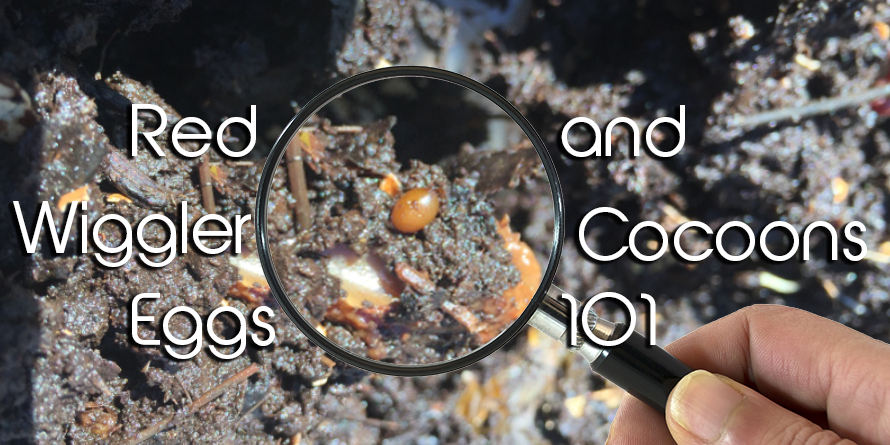Red Wiggler Express: The Best Source for Reliable Worms and Bait
Red Wigglers: The Unsung Heroes of Organic Waste Recycling
Red wigglers, or Eisenia fetida, function as important representatives in the organic waste reusing procedure, changing thrown out materials into beneficial vermicompost. Their effective breakdown of organic matter not only improves soil quality yet likewise contributes to lasting waste administration practices. As the world increasingly looks for solutions to combat waste accumulation and boost agricultural efficiency, comprehending the duty of these worms ends up being vital. What devices allow them to prosper in compost atmospheres, and exactly how can they be efficiently utilized in both residential and commercial setups? Discovering these concerns reveals the broader implications of vermicomposting in our environmental landscape.
What Are Red Wigglers?
The amazing strength of red wigglers, medically called Eisenia fetida, highlights their essential function in natural waste recycling. These tiny, reddish-brown earthworms are typically found in breaking down raw material, such as garden compost piles and manure lots. Lake Hickory Bait. Unlike various other earthworm varieties, red wigglers thrive in nutrient-rich settings and are extremely reliable at damaging down natural products, making them crucial for vermicomposting

(Red Wiggler Express)Along with their function in waste decrease, red wigglers add to soil health by enhancing soil framework and aeration through their burrowing tasks (Lake Hickory Bait). Their presence in composting systems not only boosts disintegration prices however also promotes a lasting method to throw away administration, illustrating their value in ecological conservation initiatives
Benefits of Composting With Worms
Composting with worms, especially red wigglers, uses numerous advantages that improve both waste monitoring and dirt wellness. These worms efficiently break down natural waste, converting it into nutrient-rich vermicompost that improves dirt. This procedure speeds up decomposition, allowing for a much faster recycling of cooking area scraps and various other natural products contrasted to traditional composting approaches.
Furthermore, the vermicompost produced by red wigglers is brimming with beneficial bacteria, which help improve soil structure, aeration, and wetness retention. This improves the overall health of plants, promoting strenuous development and enhanced returns in yards and farming settings. In addition, making use of worms in composting minimizes the manufacturing of greenhouse gases, such as methane, adding to a much more lasting waste administration system.

Just How to Beginning Vermicomposting
Establishing a vermicomposting system is an uncomplicated procedure that can generate substantial benefits for both waste monitoring and soil enrichment. To start, select an appropriate container, such as a plastic bin or wooden box, with ample ventilation openings to make sure correct air flow. The dimensions must preferably be about 2 feet by 3 feet, permitting enough space for the worms to prosper.
Following, prepare bed linens material, which can include shredded paper, cardboard, or coconut coir. This bed linen must be moistened to produce a suitable habitat for the worms. As soon as the bedding remains in place, present red wigglers (Eisenia fetida) right into the bin, normally around one pound of worms for every square foot of area.
Following the placement of worms, add organic waste, such as vegetables and fruit scraps, coffee grounds, and crushed eggshells. Prevent adding dairy, meat, this hyperlink or oils, as these can create smells and attract insects. Lastly, place the bin in a shaded, temperature-controlled area to maintain optimum conditions for worm activity. With these steps, you will properly initiate a vermicomposting system that adds to lasting waste management and enriches your soil.
Preserving a Healthy And Balanced Worm Container
(Red Wiggler Express)Maintaining a worm container prospering calls for normal interest and like guarantee the health and wellness of the red wigglers and the effectiveness of the composting procedure. Correct maintenance begins with checking the dampness degrees; the bin needs to be wet yet not saturated. An excellent general rule is to keep an uniformity similar to a wrung-out sponge.
Delicately mixing the bed linen and food scraps every few weeks prevents compaction and makes certain that all worms have accessibility to oxygen. In addition, it is crucial to feed the worms properly.
Temperature law is an additional important aspect. Red wigglers grow in a variety of 55 to 77 levels Fahrenheit. If the container ends up being also hot or chilly, the worms may come to be worried - Lake Hickory Bait. Lastly, regularly look for indications of health and wellness, such as worm populace development and the visibility of healthy and balanced castings. By faithfully managing these elements, one can maintain a durable and productive worm bin.
Effect On Sustainable Living
The effective maintenance of a worm bin not just profits the health of red wigglers but also contributes considerably to lasting living techniques. By reusing natural waste, such as kitchen scraps and backyard particles, red wigglers assist divert substantial quantities of product from garbage dumps. This reduction in waste not only lowers greenhouse gas discharges but additionally reduces the ecological worry related to waste administration.
Furthermore, the spreadings produced by red wigglers act as a nutrient-rich organic plant food, boosting soil wellness and promoting plant development. This natural choice to chemical fertilizers sustains lasting farming and gardening practices, reducing reliance on synthetic inputs that can damage ecosystems. Furthermore, worm composting promotes understanding of waste administration, encouraging people and neighborhoods to adopt even more sustainable behaviors.

Conclusion
In summary, red wigglers offer as important factors to natural waste reusing through their effective decomposition of natural products. By incorporating vermicomposting into waste management techniques, people and neighborhoods can considerably lower waste while advertising ecological sustainability.